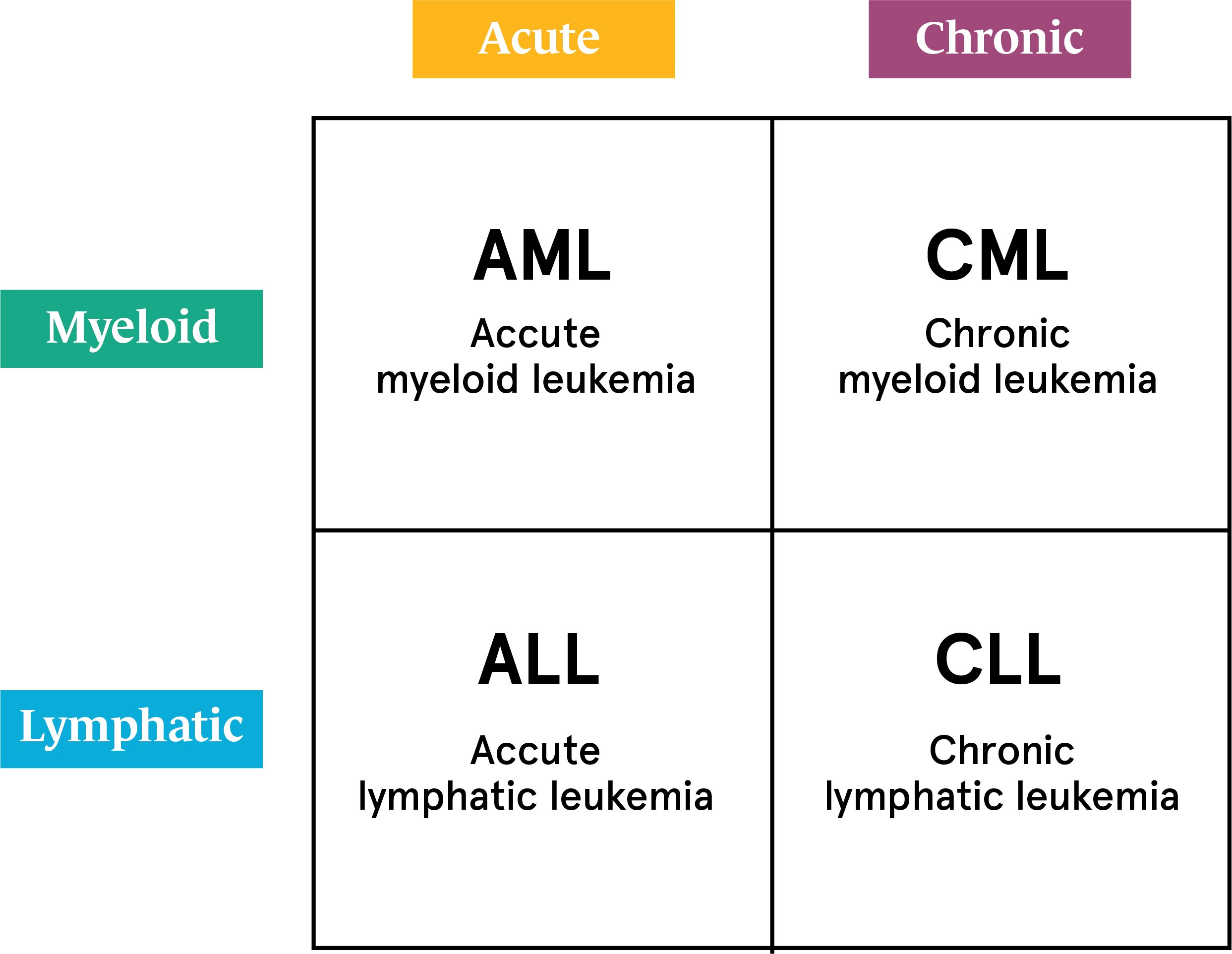Common Symptoms of Leukemia
5 min read

Author: Chris Benton, MD
Leukemias are certainly not the most common cancer diagnosed in the U.S., but they are more common than many people realize, particularly in adults. Leukemia is a broad term for cancer in your blood cells and bone marrow. As with all forms of cancer, early detection and treatment of leukemia can improve your chances of survival. If you have any of the signs of leukemia, tell your doctor.
The symptoms you might notice may differ depending on the type of leukemia you might have, and some are non-specific. They can include:
- Anemia, which may cause shortness of breath on exertion and fatigue
- Bone and/or joint pain
- Chills
- Easy bleeding or bruising
- Fatigue
- Fever of unknown origin
- Headaches
- Loss of appetite
- Night sweats
- Tiny red spots under the skin, also known as petechiae
- Unexplained weight loss
- Enlarged or swollen lymph nodes
“Feeling full easily after eating can be a result of an enlarged spleen which may in turn cause weight loss” said Dr. Chris Benton, hematologic oncologist at Rocky Mountain Cancer Centers (RMCC). “Spontaneous bleeding in the gums could be a sign of an underlying hematologic disorder, especially if associated with recurrent infections or mouth ulcers.”
Starting Points for Leukemia
The type of leukemia you have is based on what type of blood cell is involved. The two most common kinds of leukemia are lymphocytic and myeloid, and each of these types can be acute (fast-spreading cancers) or chronic (cancers that develop over many years).

Determining the exact type of leukemia, as well as molecular details about the cancer, is critically important in the treatment plan. For example, lymphoid and myeloid leukemias are separate categories of leukemia and are often diagnosed and treated differently. Additionally, some types of leukemia require no medical treatment and are only monitored, while other types of leukemia must be treated immediately in order to effectively combat the disease. Here are some examples of differences between types of leukemia.
What is Lymphocytic Leukemia?
Lymphocytic Leukemia develops in lymphocytes, a type of white blood cell that forms in your bone marrow. There are two types of lymphocytic leukemia - Acute Lymphocytic Leukemia (ALL) and Chronic Lymphocytic Leukemia (CLL). Acute Lymphocytic Leukemia (ALL) causes a shortage of healthy blood cells. People with this condition bruise and bleed easily. ALL most often affects children, although many adults are diagnosed with ALL. Adults over age 50 are at an increased risk for ALL and patients may experience enlarged lymph nodes, dizziness or lightheadedness, fatigue, frequent or recurring infections, pale skin, shortness of breath and/or weakness.
Chronic Lymphocytic Leukemia (CLL) develops slowly and most people do not show symptoms until the later stages of the disease. In fact, this form of leukemia is most often diagnosed when a medical provider orders blood tests for a different reason.
When people do experience symptoms, they can include:
- Chronic or recurring infections in the skin, lungs, or kidneys
- Enlarged spleen and/or lymph nodes
- Fatigue
- Early satiety (feeling of fullness or pain in the belly)
- Shortness of breath
- Weight loss
“The biggest risk factor for chronic lymphocytic leukemia is age,” Dr. Benton said. “Most people with this form of leukemia are adults in their 60s and 70s, although we do see younger people as well. CLL may need treatment, but sometimes we simply monitor the disease and it may not require treatment at all.”
What is Myeloid Leukemia?
Myeloid Leukemia develops in myeloid cells, a type of blood cell that forms in your bone marrow. There are multiple types of myeloid leukemia, some of which are lower-grade and require monitoring or treatment over a long period of time, while others are more aggressive and require immediate treatment. While myeloid leukemias are commonly associated with aging, they are not exclusively diseases of older adults and can affect younger individuals as well. Men are at higher risk of developing myeloid leukemia, as are people who have received chemotherapy or radiation therapy. Exposure to a chemical called benzene is another risk factor. Benzene is found in tobacco smoke, gasoline, and vehicle exhaust.
Acute Myeloid Leukemia (AML) is a more aggressive form of leukemia that tends to affect adults. AML requires immediate attention and treatment by a knowledgeable hematologic oncologist. Common symptoms include anemia, easy bleeding or bruising, and frequent infections. “We have specialized therapies as well as clinical trials for patients with AML,” stated Dr. Benton.
Chronic Myeloid Leukemia (CML) affects 15% of adult leukemia patients. This form of leukemia is unlike the others because it makes a new gene in the body that causes diseased cells to reproduce out of control. Symptoms of CML are often vague and resemble other diseases. They include:
 Bone pain
Bone pain- Fatigue
- Feeling full after a small amount of food
- Fever
- Weakness
- Weight loss
Men are at higher risk for chronic myeloid leukemia, as are people who have been exposed to radiation at home or work. Your risk increases as you get older.
The First Stage of Leukemia
The stages of leukemia vary based on the type of leukemia you have, but generally, the first stage begins with changes in white blood cell count.
“Most cancers are staged based on the size and spread of tumors,” Dr. Benton said. “Leukemia staging is different because the cancer affects blood cells.”
When diagnosing leukemia, medical providers consider blood cell counts, risk factors, medical history, and signs and symptoms. The only sure way to determine if you have leukemia is to test the bone marrow for cancer cells. This procedure can be done in RMCC offices.
Treatment Options for Leukemia
Rocky Mountain Cancer Centers offers many treatment options for leukemia. Your treatment plan will vary based on the type of leukemia you have, and our expert oncology teams work with your specific diagnosis to determine the best course of action for you.
For chronic leukemia, your oncologist may recommend watchful waiting, which monitors labs and patient symptoms over time before initiating treatment. This monitoring period could last several months to several years before treatment is required.
Other leukemia treatment options include:
- Chemotherapy – which uses powerful medications to kill cancer cells
- Targeted therapy – which blocks the growth of certain leukemia cells
- Antibody therapy – which use antibody proteins to attack leukemia cells
- Immunotherapy – which stimulates the body’s natural immune response against leukemia cells
- Cellular therapy – which uses cells administered to attack leukemia cells.
- Bone marrow transplants – which replace damaged bone marrow with healthy stem cells
Rocky Mountain Cancer Centers also offers access to advanced cancer treatment therapies through clinical trials. Discuss with your cancer provider if participating in clinical trials is right for you.
To learn about the best leukemia treatment options for you at Rocky Mountain Cancer Centers, find a hematologist near you.
